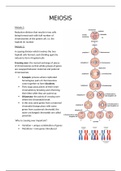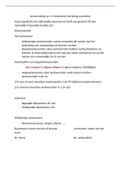Summary
Summary Grade 12 Biology: Meiosis
- Course
- Matric
- Institution
- St Stithians College (Stithian)
A brief summary of the stages of Meiosis, including important terminology and definitions, the differences between mitosis and meiosis, and abnormal meiosis.
[Show more]




